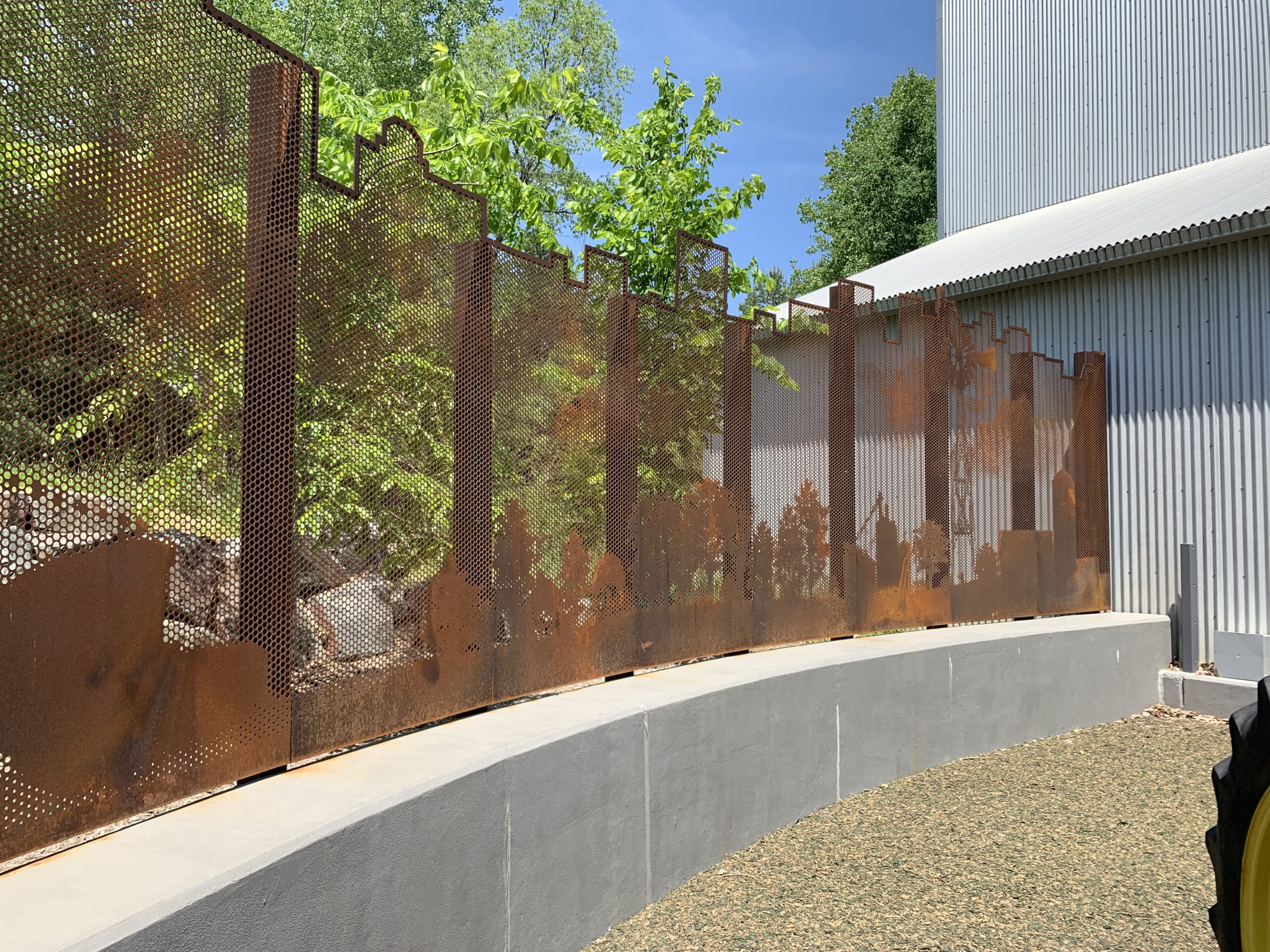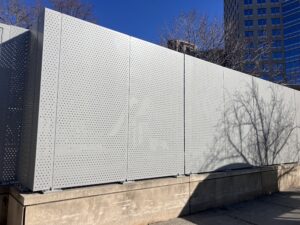
The idea of using rust to build durable structures might seem counterintuitive. After all, rust is typically the enemy of metal, a destructive force that weakens and breaks down steel over time. So, how is it that weathering steel — a material that appears to be rusting — can still be structurally safe and reliable?
Let’s dive into the unique properties of this fascinating material and explore how it works.
What is Weathering Steel?
Weathering steel, often known by its trade name Corten steel, is a special alloy designed to form a protective rust layer on the metal. Unlike ordinary carbon steel, which forms a porous, flaky, and non-adherent rust layer, weathering steel develops a dense, stable, and highly adherent protective layer. This layer, known as a patina, acts as a shield that protects the underlying metal from further corrosion. The rust that forms on weathering steel is not a destructive process; rather, it’s a natural and beneficial one that enhances the material’s durability.
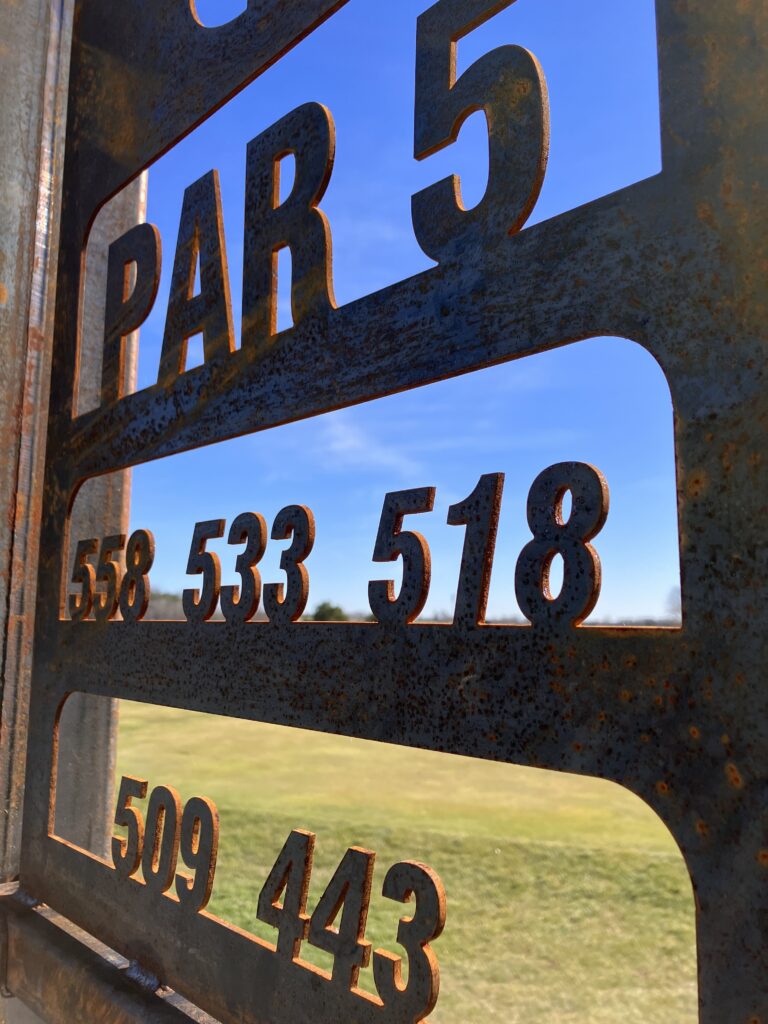
How is it Made?
Weathering steel is a low-carbon alloy that contains small amounts of additional elements such as copper, chromium, nickel, and phosphorus. These alloying elements play a crucial role in the steel’s unique ability to form a protective patina.
When exposed to air and moisture, the copper reacts with oxygen and moisture to create the patina. This process is an intentional part of the steel’s design. The patina provides a self-healing protective layer that is embedded into the metal itself, keeping the steel safe from the elements over time.
How Long Does it Take For Patina to Form?
The transformation from regular steel to weathered steel takes time. Typically, it takes around 2 to 6 years for the steel to develop its full patina. The speed of this process depends on the environmental conditions, such as moisture levels, pollution, and exposure to weather cycles.
Weathering steel tends to patina best in urban environments and locations with a combination of wet and dry weather cycles. The presence of pollutants and weather variability provides the ideal conditions for the rusting process to create the protective layer. Once the patina is fully formed, the steel can resist corrosion for much longer than untreated metals.
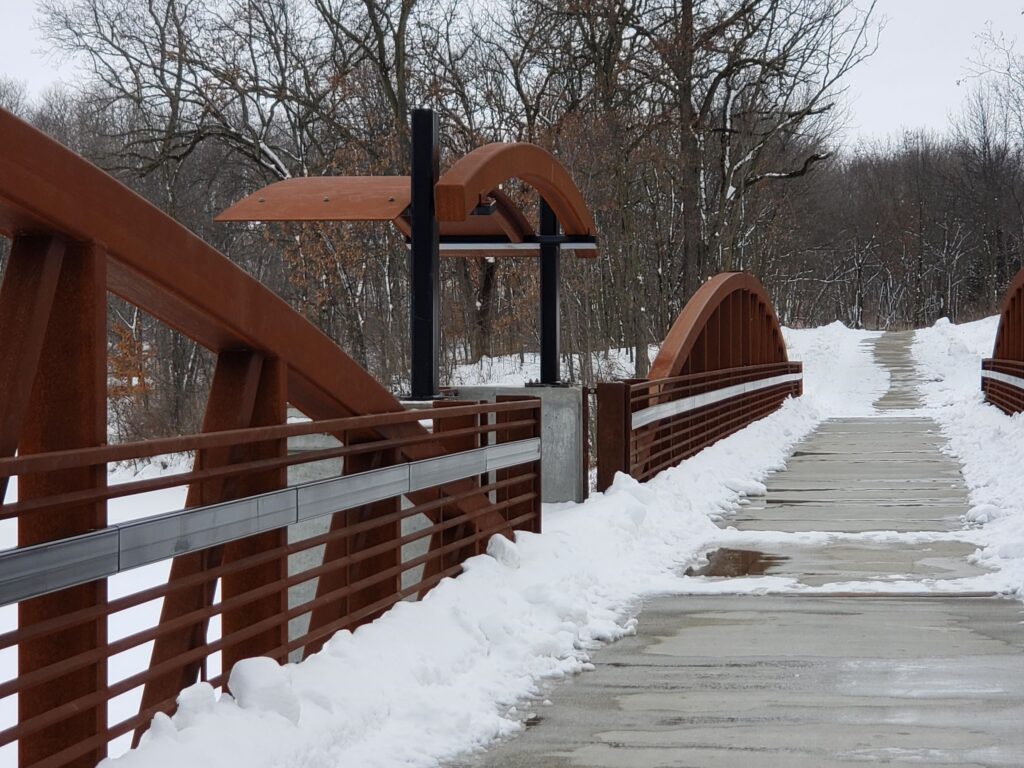
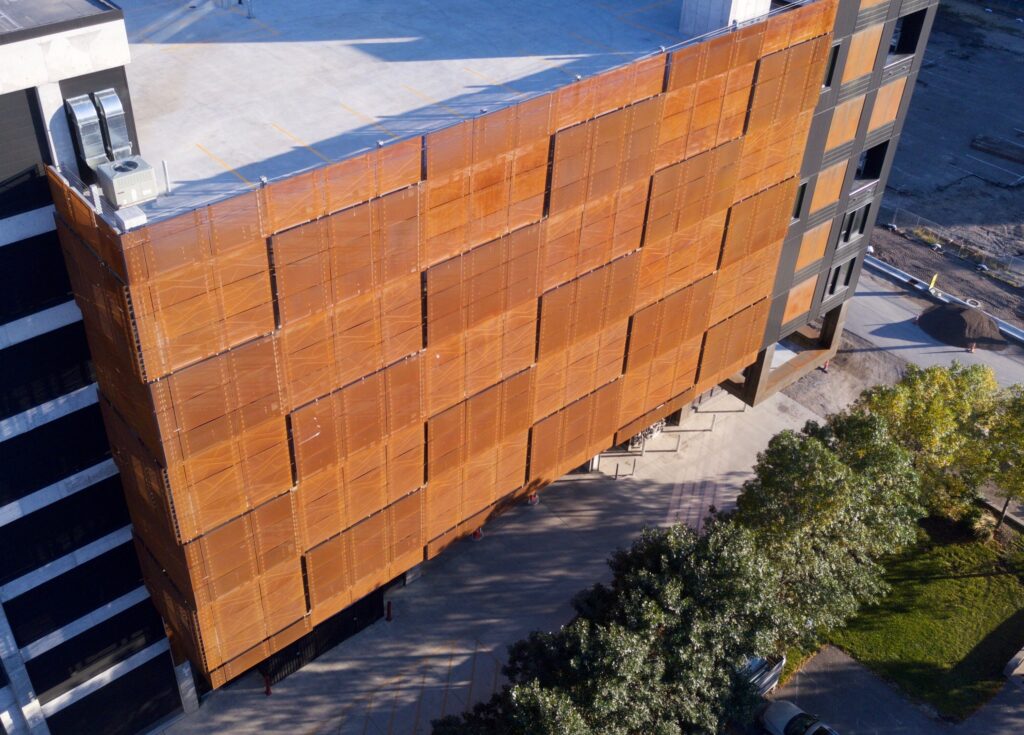
Weathering steel might appear to be rusting, but that’s exactly what makes it so unique and durable. The patina formed on the steel is not just a sign of wear and tear — it’s a sign of the metal’s strength. By allowing rust to bond with the surface and protect the steel, weathering steel can outlast regular carbon steel in many applications, making it an ideal material for both structural and aesthetic purposes.
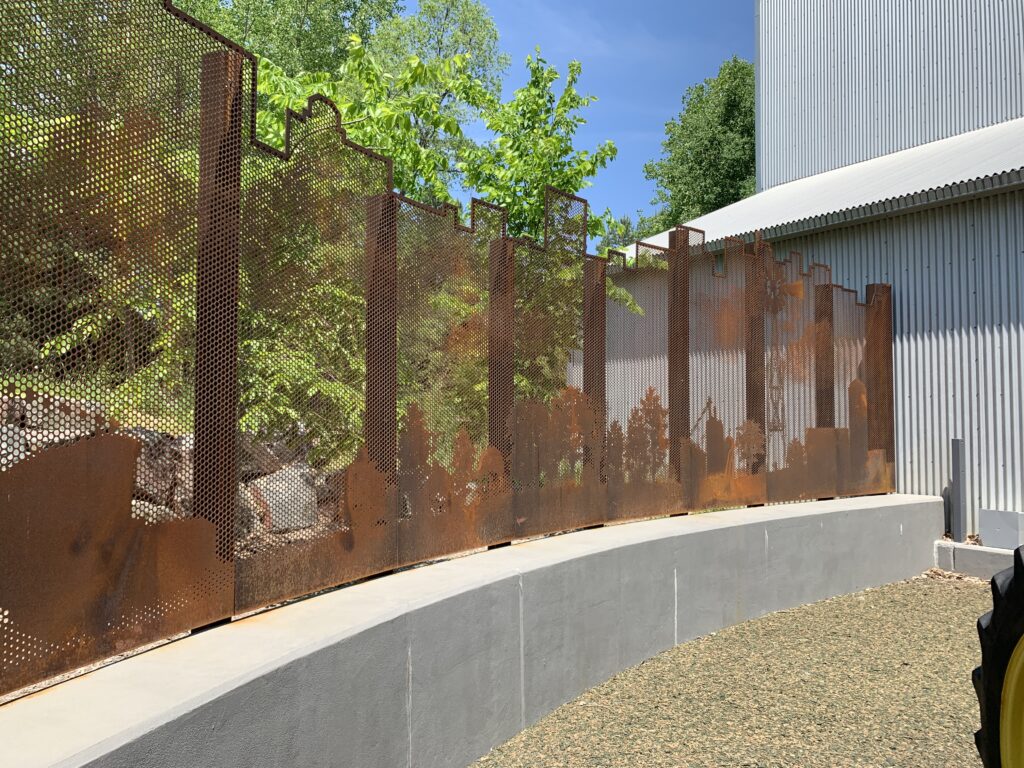
Why Would You Use Weathering Steel for Your Project?
A Unique, Evolving Aesthetic
Weathering steel has a natural, earthy appearance. Its distinctive reddish-brown patina creates a warm, rustic, and organic look that blends beautifully with natural landscapes, urban settings, and minimalist or industrial designs.
The steel’s appearance changes over time as the patina develops and reacts to weather cycles, offering a dynamic and evolving facade that tells a story of exposure and resilience. This “Living” material can be a key design feature.
Low Maintenance and Long-Term Cost Savings
No painting or finishing is required for weathering steel. The protective rust layer negates the need for traditional painting or constant re-coating, significantly reducing long-term maintenance costs and associated environmental impact from paints. If the surface is scratched, the steel will naturally re-weather and form a new protective layer.
Durability and Longevity
Weathering steel retains high structural strength, making it suitable for load-bearing applications. It is also corrosion resistant (in specific environments). It’s designed to resist atmospheric corrosion much better than conventional carbon steel, offering a long lifespan in appropriate climates.
Sustainable Design Goals
Like other steels, weathering steel is 100% recyclable at the end of its life. Eliminating paints and coatings means fewer chemicals are introduced into the environment during the building’s lifecycle.

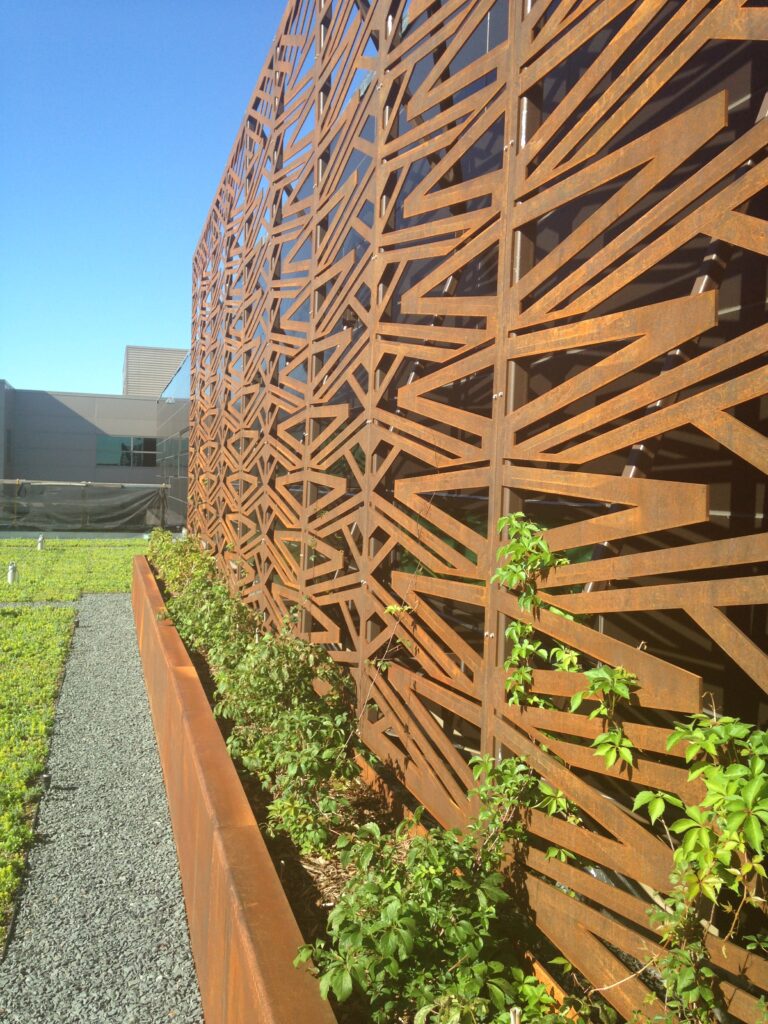
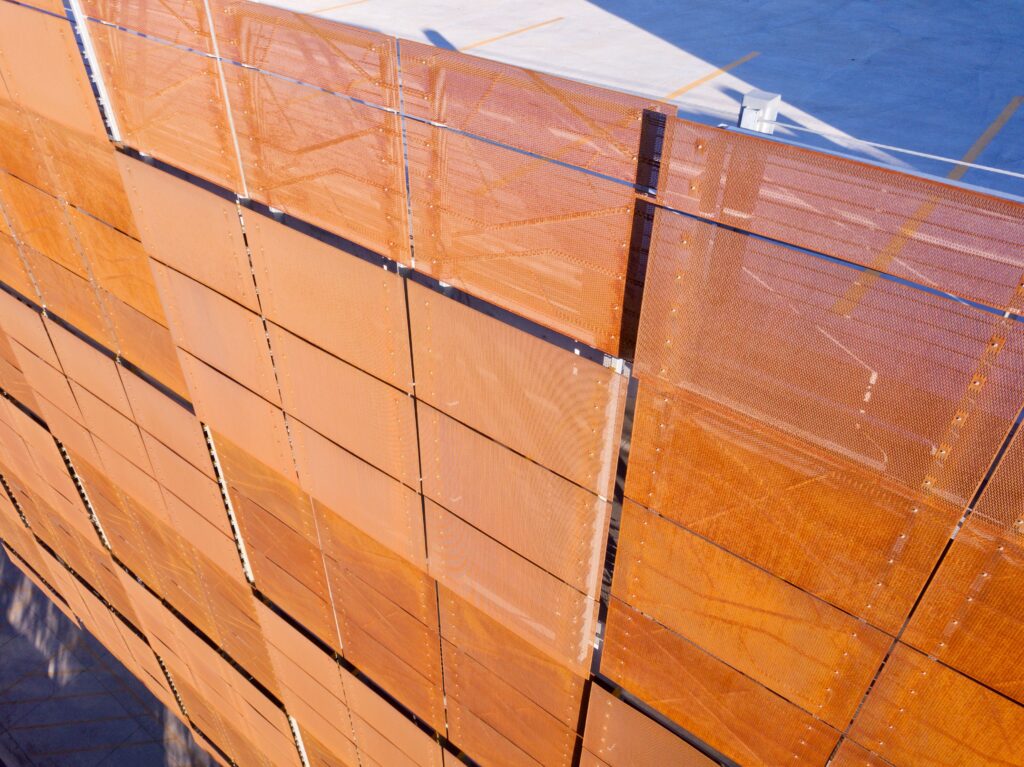
Ideal Architectural Applications
- Building Facades and Cladding
- Landscaping Elements
- Outdoor Sculptures and Public Art
- Bridges and Structural Elements
- Signage and Wayfinding
- Fire Pits
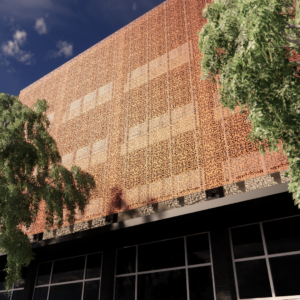
Weathering steel is an excellent choice for architectural projects seeking a durable, low-maintenance material with a distinctive, evolving aesthetic, especially in environments that support proper patina formation. However, careful consideration of the specific climate, adjacent materials, and design details is crucial for its successful application.
Wondering if weathering steel is the right material for your project? Unsure what the potential implications could be? We would be happy to discuss your design visions and help make them a reality.
Contact us at emmy.r@astrometalcraft.com for more information.

